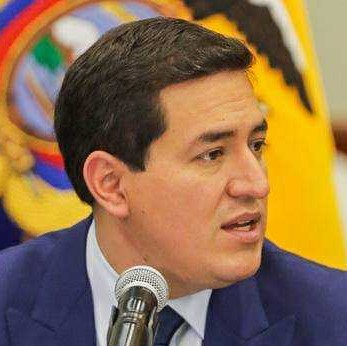August 24, 2022
It’s been one year since the world, via the International Monetary Fund (IMF), took a historic step to address the global challenges resulting from the COVID-19 pandemic. On August 23, 2021, $650 billion worth of resources known as Special Drawing Rights (SDRs) were distributed among IMF member countries around the world.
These resources, a type of reserve asset, provided the best source of relief to low- and middle-income countries responding to the dual health and economic crises, sending approximately $209 billion to them via their IMF quota shares. As a tool, SDRs are unique in that they are not loans, do not have conditions (like requiring austerity) around their use, and do not have any costs to taxpayers. Because SDRs enabled governments to acquire vaccines and personal protective equipment, to import necessities, and to support their populations, the August 2021 issuance almost certainly saved the lives of many people struggling to survive during some of the worst crises of the last few decades.
This research updates an April 2022 report and tracks how countries made use of these SDRs from August 23, 2021 to July 31, 2022. Specifically, countries may use SDRs to supplement their existing reserves; to acquire hard currency by exchanging them; to support their domestic budgets and reduce their external, non-IMF debt; and — effectively — as IMF debt relief. Using SDRs in ways other than as reserves entails paying a relatively small amount of interest. This is why SDRs have been described as “practically free financing.”
The data show that during this period:
-
Of 105 countries that used SDRs, 104 were low- and middle-income countries;
-
Excluding use of SDRs as reserves, 15 countries used SDRs in three ways, 27 countries in two ways, and 58 countries in one way;
-
$16.3 billion was exchanged for hard currency by 42 countries;
-
$10.9 billion was used, effectively, as IMF debt relief by 79 countries to some degree, and of that, $8.9 billion was used by 34 countries to a significant degree;
-
At least 69 countries have included SDRs totaling $80.4 billion worth in their government budgets or used them for fiscal purposes.
Explore how SDRs have been used, below.
The SDR issuance has touched every continent and SDRs were particularly well-used by African countries.
Compared to other sources of support for low- and middle-income countries, SDRs had — by far — a greater impact. However, as shown in this sample, richer countries provided themselves with much higher levels of support.
SDRs were badly needed. The five weeks after the issuance saw high use, and there has been somewhat consistent use since then.
SDRs were almost exclusively used by low- and middle-income countries (one advanced economy — Greece — used SDRs as debt relief for its crisis-era loans).
SDRs were widely used across geographic regions.
Sub-Saharan Africa especially depended on SDRs, having the highest take-up rate.
Many countries were able to maximize the effect of SDRs by combining various uses and even exceeding the nominal value that they received.
Fiscal uses — using SDRs to spend domestically — were especially important.
There are many benefits for countries like the United States that do not directly use SDRs. In addition to supporting American exporters, SDRs generate millions of dollars for Americans and cost them nothing.
Additionally, SDRs are sanctions-neutral, meaning they comply with sanctions to the extent that IMF member countries do.
Compared to an issuance of SDRs in the wake of the global recession in 2009, the 2021 issuance was an even greater success.
Because SDRs are distributed according to country shares at the IMF, a significant portion goes to richer countries. Since they have no need to use SDRs — and do not use them in any significant way — there have been efforts to rechannel these SDRs as loans to low- and middle-income countries. However, after one year, very few resources have been committed and none have actually been received by low- and middle-income countries.
Due to the fact rechanneling has not yet delivered on its promises, there is a growing effort to help low- and middle-income countries with an additional issuance of SDRs. In the context of additional global crises, such as rising interest rates, the high costs of food and energy, and spillover effects from the war in Ukraine, a similarly sized allocation as last year’s would provide $209 billion for these countries.






